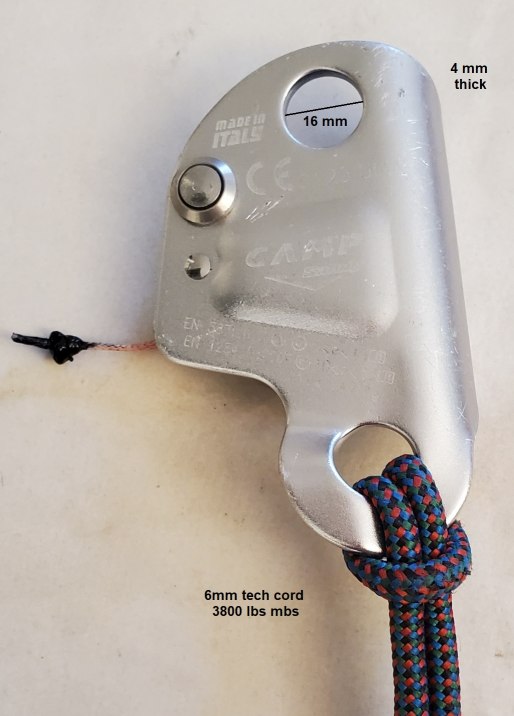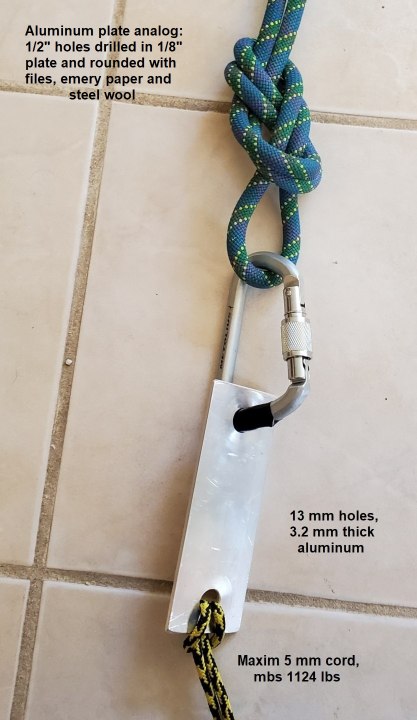

I didn’t want to place my ascenders in harm’s way, so I made a quick analog from sheet metal, for a pull test. Since I planned to use 5 mm cord (vs. 6mm) in the test, I made the holes 13 mm in diameter (a ½” drill bit, with some rounding out), in 3.2mm (1/8”) sheet aluminum.; the pictures below show the actual ascender and the analog.
 |
 |
I put a steel carabiner through one hole in the
sheet metal,
and tied figure-8-on-bights to each end of a 2m length of 10.2 mm
dynamic gym
rope. One loop of the 10.2mm went over the carabiner, and the other on
the tow
hook of my Jeep. I tied a loop in 5 mm Maxim polyester ( 1124 lbs bs).
I joined
the ends of the 5mm Maxim cord with a double fisherman, and
girth-hitched the 5mm cord through the
second hole. The other end of the cord was attached to a linescale 3
load cell, which was then attached to a rigid steel post in the ground.
Then I drove the jeep as slowly as I could, and snapped the
Maxim loop. The force was 1096 lbs at breaking, and the break was in the double fishermans knot used to tie the cord in a loop, NOT at the girth hitch. The strength of the loop should be at most 2x1124, where 1124 is the bs reported by Maxim for a single strand, so we got about 49% of the loop breaking strength. Scaled to the 3800 lb bs (single strand) of the cord I actually used on my ascenders, that would be 3705 lbs projected to
break the girth hitch on the real ascender. That is a ridiculous amount
of force to put on one ascender, and would likely desheath the main
rope long before the cord broke. From experience, the reported single-strand strength of the Maxim may be 20% low, but still get at least 3000 lbs projected.